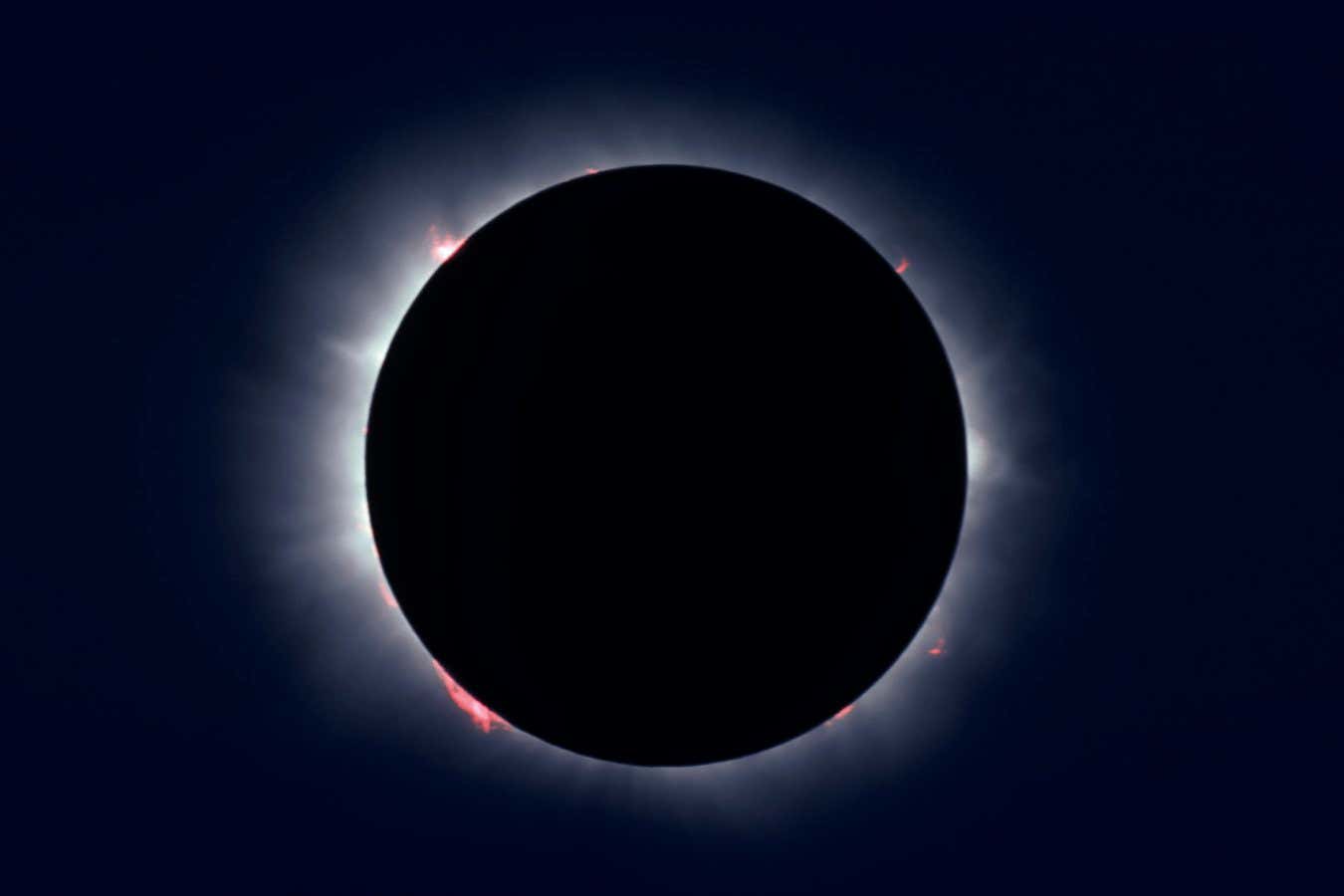A total solar eclipse is a unique experience. From shadow bands to the sun’s majestic corona and pinkish prominences, here’s what you can expect to see
By Jamie Carter
7 March 2024
Pink streaks called prominences appear during a total eclipse
Alan Dyer/Stocktrek Images/Getty Images
There is no experience in life like witnessing a total eclipse of the sun. For a few moments, the sky goes dark, the air gets cold and the stars come out in the middle of the day. Some people will go through life never seeing one, but eclipse chasers like me can’t get enough.
The thrill of anticipating the next total eclipse comes from the fact that each one is totally unique. They can last anywhere from a single second to over 7 minutes, and they happen over varying types of geography and geology, usually over the sea.
Advertisement
The total solar eclipse on 8 April will only be visible to those in a path about 185 kilometres wide, where the sun will be completely eclipsed for up to 4 minutes and 26 seconds. Just before, during and after these magical minutes, those in the path of totality should look out for a range of phenomena. Clear skies allowing, here’s what to expect from a total solar eclipse:
Sunspots being covered by the moon
This is one sight that everyone across North America has a chance of seeing. At the moment, the sun is approaching the most active part of its cycle, called solar maximum, which lasts between 11 and 17 years. This means magnetic activity is as high as it gets, causing visible sunspots on the sun’s surface. If these dark, cool, magnetically complex regions are large enough, they can be seen at any time through eclipse glasses. Watching them gradually being covered by the moon during an eclipse is an interesting sight, even for those outside the path of totality.
Shadow bands on the ground
Between a couple of minutes and about 30 seconds before the sun becomes totally eclipsed, the from its surface, called the photosphere, comes from only a slim crescent. When this happens, it is sometimes possible to see wavy lines moving swiftly across light-coloured surfaces. “A [bed] sheet or other white-ish surface placed on the ground may show shadow bands,” says Frank Maloney at Villanova University in Pennsylvania. “These are due to that sliver of photospheric light that travels through our atmosphere and essentially ‘twinkles’ in roughly parallel bands.” Whether they become visible depends on the amount of turbulence in Earth’s atmosphere.
